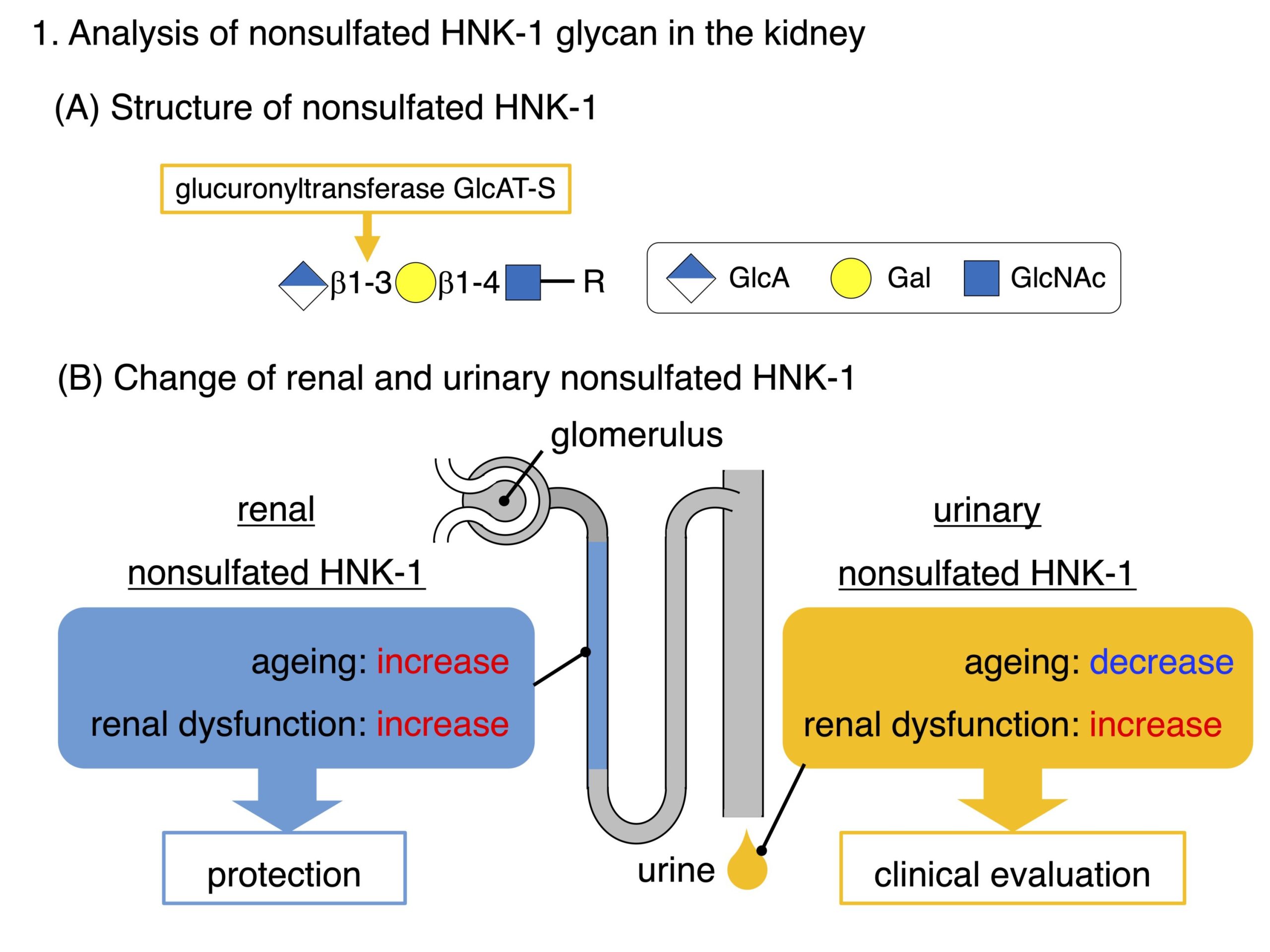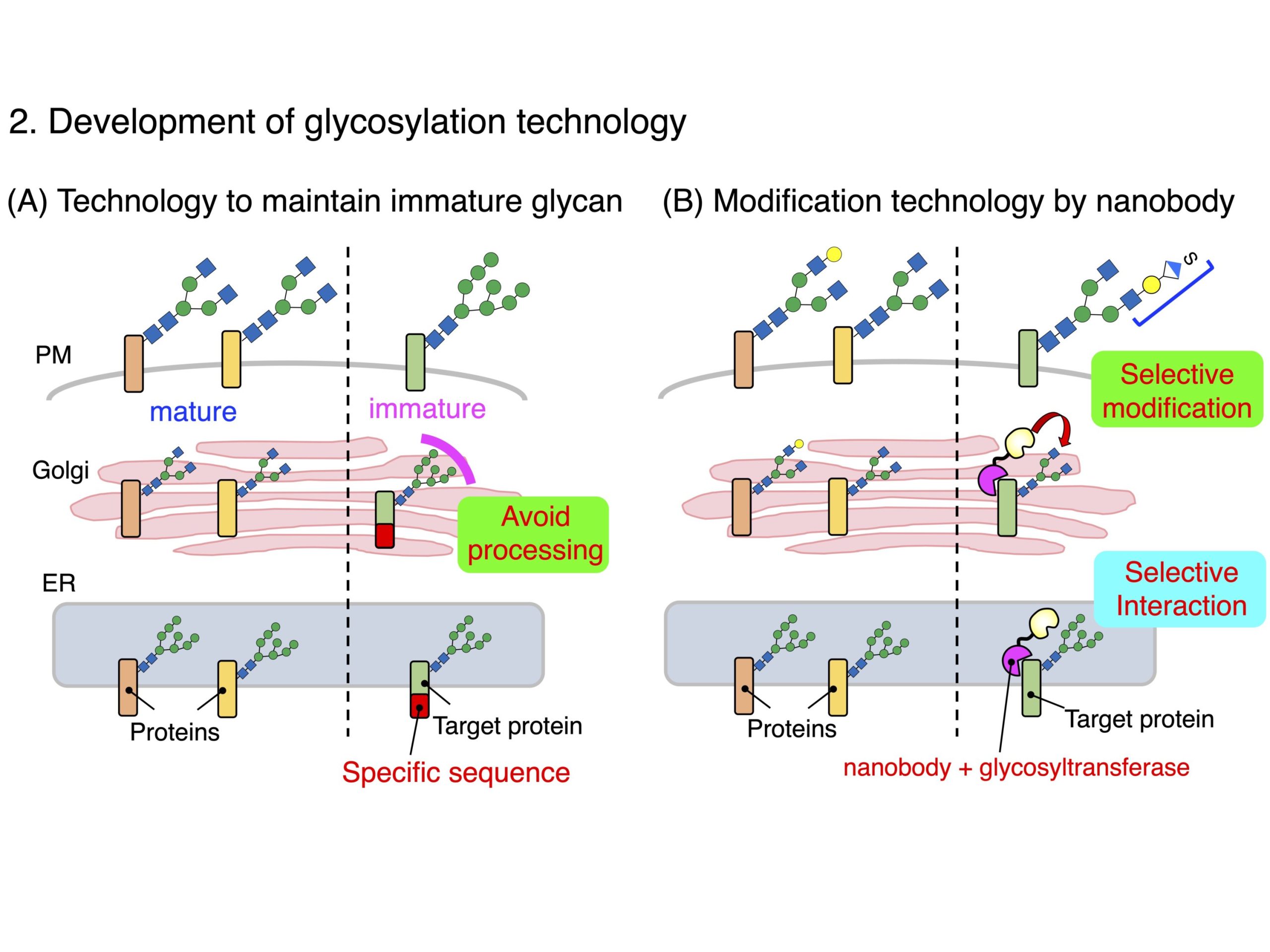Associate Professor Jyoji Morise
Glycans modify the function of proteins and lipids and give cells individuality. Although their structures are complex and diverse, each glycan is thought to contain important biological information. Among various glycans, our group focuses on specific glycans called nonsulfated HNK-1 (Human Natural Killer-1) and develops technologies to control the expression of diverse glycan structures. However, if you find other interesting themes related to glycans, we will provide an environment in which you can pursue your research based on your own ideas.
Research and Education
1. Nonsulfated HNK-1 glycans are composed of a characteristic trisaccharide structure and strongly expressed in the kidney. Recent analysis has revealed that this glycan is protective of renal function. Therefore, we are analyzing the molecular mechanism by focusing on the carrier molecule and the expression region of nonsulfated HNK-1 glycans. Furthermore, it has been found that this glycan is also detected in urine and shows considerable changes in response to various renal dysfunctions. In the future, we aim to develop nonsulfated HNK-1 glycans as biomarkers of renal diseases.
2. After N-glycans processing takes place in the Golgi apparatus, the proteins are transported to the plasma membrane. In other words, glycan structures are diversified in this process. In contrast, we recently found that a specific amino acid sequence maintains immature N-glycans even in the plasma membrane. Furthermore, by fusing nanobody with a specific glycosyltransferase, we discovered the possibility of selective glycosylation to target molecules. Through the development of these technologies, we are pioneering a new method to control glycosylation at will.
 |
 |
Publications
- Okada A, Harui R, Ishida T, Higashi K, Nonaka M, Oka S, Morise J. Three glutamic acidresidues in the cytoplasmic N-terminal tail of long-form GlcAT-P define Golgi-to-ER trafficking. J Biochem, 178, 161-170. (2025)
- Morise J, Yamamoto S, Midorikawa R, Takamiya K, Nonaka M, Takematsu H, Oka S.Distinct cell surface expression patterns of N-glycosylation site mutants of AMPA-type glutamate receptor under the homo-oligomeric expression conditions. Int J Mol Sci, 21, 5101. (2020)
- Morise J, Suzuki KGN, Kitagawa A, Wakazono Y, Takamiya K, Tsunoyama TA, NemotoYL, Takematsu H, Kusumi A, Oka S. AMPA receptors in the synapse turnover by monomer diffusion. Nat Commun, 10, 5245. (2019)
- *Nakamura A, *Morise J, Yabuno-Nakagawa K, Hashimoto Y, Takematsu H, Oka S. Site-specific HNK-1 epitope on alternatively spliced fibronectin type-III repeats in tenascin-C promotes neurite outgrowth of hippocampal neurons through contactin-1. PLoS One, 14, e0210193 (2019) *These authors contributed equally to this work.
- Morise J, Takematsu H, Oka S. The role of human natural killer-1 (HNK-1) carbohydrate in neuronal plasticity and disease. Biochim Biophys Acta, 1861, 2455-2461. (2017)
Laboratory
Associate Professor: Jyoji Morise
Tel: +81-75-751-4185
e-mail: morise.jyoji.2n@kyoto-u.ac.jp
http://oka-lab.hs.med.kyoto-u.ac.jp/index_en.html/
